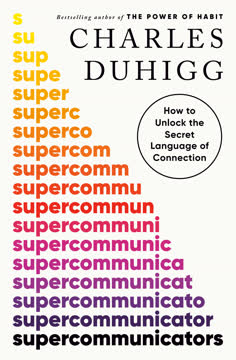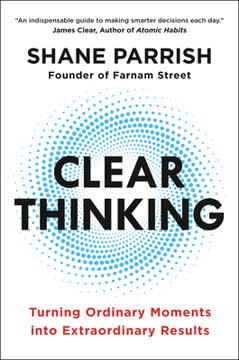가지 주요 요점
1. 전략과 실행은 불가분의 관계; 둘 다 불확실성 하에서 선택을 하는 것을 포함한다
전략은 비용보다는 수익에 관한 것이며, 완벽함은 불가능한 기준이다.
전략은 선택에 관한 것이다. 전략 수립과 실행이 별개의 과정이라는 전통적인 관점은 잘못되었다. 실제로는 둘 다 불확실성과 경쟁 압박 하에서 결정을 내리는 것을 포함한다. 경영진은 다음에 집중해야 한다:
- 어디에서 경쟁할지와 어떻게 승리할지를 정의하기
- 전략이 성공 가능성을 높이지만 보장하지는 않는다는 것을 인식하기
- 선택의 논리를 명확히 하여 테스트하고 개선할 수 있도록 하기
상세한 계획을 세우기보다는, 리더들은 조직 전반에 걸쳐 직원들이 명확한 전략적 틀 내에서 일치된 선택을 할 수 있도록 권한을 부여해야 한다. 이는 조건이 변할 때 더 빠르게 적응할 수 있게 한다.
2. 고객 충성도는 과대평가되었다; 누적 이점을 창출하는 데 집중하라
고객은 의식적인 선택을 하지 않는다; 그들은 습관에 빠진다.
습관적인 행동을 구축하라. 전통적인 충성도 프로그램은 사람들이 실제로 어떻게 결정을 내리는지를 무시하기 때문에 종종 실패한다. 보상으로 충성 고객을 만들려고 하기보다는, 기업은 다음에 집중해야 한다:
- 가장 쉽고 익숙한 선택이 되기
- 습관을 강화하는 제품과 경험을 설계하기
- 브랜딩, 포장, 사용자 인터페이스에서 일관성을 유지하기
목표는 각 상호작용이 미래의 상호작용을 더 가능하게 만드는 "누적 이점"을 창출하는 것이다. 이것이 Tide 세제가 최소한의 제품 차이에도 불구하고 오랜 기간 동안 지배적인 시장 점유율을 유지하는 이유이다.
3. 기업 기능은 가치를 더하기 위해 자체 전략이 필요하다
기업 기능은 그들의 서비스를 사용하는 사업 부서라는 고객을 섬긴다.
종속적인 전략을 피하라. 많은 회사들은 HR, IT, 재무와 같은 기업 기능을 단순히 사업 부서를 지원하는 비용 센터로 취급한다. 이는 차별화되지 않고 반응적인 서비스로 이어져 가치를 창출하지 못한다. 대신, 기능은 다음을 해야 한다:
- 주요 고객과 핵심 가치 제안을 정의하기
- 내부적으로 구축할 역량과 외주할 역량을 결정하기
- 경쟁 우위에 미치는 영향을 측정하는 지표를 개발하기
명확한 전략을 명시함으로써, 기능은 고가치 활동에 집중하고, 최고의 인재를 유치하며, 외주의 위협을 피할 수 있다. 그들은 주문을 받는 사람이 아니라 전략적 파트너가 된다.
4. 지식 작업을 영구적인 직무가 아닌 프로젝트 중심으로 조직하라
지식 작업은 실제로 일상적인 작업이 아니라 주로 프로젝트 형태로 이루어진다.
작업 흐름을 수용하라. 전통적인 직무 구조는 안정적이고 예측 가능한 작업을 가정하지만, 지식 노동자는 작업량의 큰 변동에 직면한다. 생산성을 향상시키기 위해:
- 영구적인 역할보다는 시간 제한이 있는 프로젝트 중심으로 조직하기
- 유연하게 할당할 수 있는 자원 풀을 만들기
- 프로젝트 요구 사항에 맞는 기술을 매칭하는 시스템을 개발하기
이 접근 방식은 컨설팅 회사와 할리우드 스튜디오에서 성공적으로 사용되며, 다운타임을 줄이고 더 많은 고가치 이니셔티브를 처리할 수 있게 한다. 또한 직원들이 여러 도메인에서 새로운 기술을 개발할 기회를 제공한다.
5. 문화 변화는 개인들이 함께 일하는 방식을 변경해야 한다
개인들이 서로 일하는 방식을 변경함으로써만 문화를 바꿀 수 있다.
상호작용에 집중하라. 새로운 가치에 대한 대대적인 선언은 문화를 거의 바꾸지 않는다. 진정한 변화는 일상적인 작업 관행에 대한 작은 변화에서 일어난다. 리더들은 다음을 해야 한다:
- 회의 구조와 의사소통 규범을 재설계하기
- 의사 결정 방식과 자원 할당 방식을 수정하기
- 부서 간 협업 기회를 창출하기
이러한 "미세 변화"는 점차 행동을 안내하는 비공식적인 규칙을 변화시킨다. 시간이 지나면서, 그것들은 "여기서 일하는 방식"에 대한 새로운 공유 가정을 만든다.
6. 데이터 분석뿐만 아니라 상상력을 통해 훌륭한 선택을 창출하라
훌륭한 선택을 창출하려면 데이터보다 상상력이 더 필요하다.
분석과 창의성의 균형을 맞추라. 많은 경영진은 전략적 선택을 할 때 데이터와 분석에 과도하게 의존한다. 엄격한 분석이 중요하지만, 획기적인 전략은 종종 상상력의 도약에서 나온다. 새로운 옵션을 생성하기 위해:
- 명시되지 않은 고객 요구를 발견하기 위해 질적 연구를 사용하기
- 다른 산업이나 도메인에서 유추를 적용하기
- 미래 가능성에 대한 설득력 있는 이야기를 만들기
목표는 현상 유지에 대한 점진적인 개선을 넘어 선택의 범위를 확장하는 것이다. 데이터는 가장 유망한 아이디어를 테스트하고 개선하는 데 사용될 수 있다.
7. 개입 설계는 혁신 자체만큼 중요하다
개입 설계는 혁신 자체만큼 중요하다.
채택을 계획하라. 많은 잠재적으로 변혁적인 혁신이 실패하는 이유는 그것들이 어떻게 도입되고 통합될지에 충분한 주의를 기울이지 않기 때문이다. 성공적인 개입 설계는 다음을 포함한다:
- 주요 이해관계자와 그들의 이익을 매핑하기
- 구현 접근 방식을 프로토타입하고 반복하기
- 지지를 구축하고 저항을 극복하는 이야기를 만들기
혁신 자체만큼 롤아웃을 신중하게 다룸으로써, 기업은 아이디어가 자리 잡고 지속적인 영향을 미칠 가능성을 높인다.
8. M&A에서 가치를 얻기 위해 가치를 제공하라
가치를 얻기 위해 가치를 제공해야 한다.
경쟁력 향상에 집중하라. 대부분의 인수는 구매자가 대상 회사에서 얻을 수 있는 것에 집중하기 때문에 실패한다. 성공적인 인수자는 다음을 한다:
- 대상 회사를 더 경쟁력 있게 만들 수 있는 구체적인 방법을 식별하기
- 낙관적인 예측에 기반한 과도한 지불을 피하기
- 시너지를 빠르게 실현하기 위해 통합에 투자하기
목표는 각 회사가 단독으로보다 더 강력한 결합된 실체를 만드는 것이다. 이를 위해 각 당사자의 강점을 명확히 이해하고 이를 활용하여 새로운 가치 원천을 창출해야 한다.
마지막 업데이트 날짜:
FAQ
What's "A New Way To Think" about?
- Author and Purpose: "A New Way To Think" by Roger L. Martin is a guide to improving management effectiveness by challenging traditional business models and introducing new ways of thinking.
- Core Concept: The book argues that many existing management models are flawed and persist despite their ineffectiveness, and it offers alternative models that promise better outcomes.
- Structure: The book is divided into four parts, each focusing on different aspects of management: context, making choices, structuring work, and key activities.
- Target Audience: It is aimed at executives, managers, and anyone interested in enhancing their strategic thinking and management practices.
Why should I read "A New Way To Think"?
- Challenge Existing Models: The book encourages readers to question and rethink established management models that may not be delivering desired results.
- Practical Frameworks: It provides practical frameworks and alternative models that can be applied to real-world business challenges.
- Expert Insights: Written by a renowned management thinker, the book offers insights from Roger L. Martin's extensive experience advising top companies.
- Broad Applicability: The concepts are applicable across various industries and organizational levels, making it a valuable resource for a wide audience.
What are the key takeaways of "A New Way To Think"?
- Rethink Management Models: Many traditional management models are outdated and need to be replaced with more effective alternatives.
- Focus on Human Value: New ways of thinking should prioritize human value over organizational structures.
- Strategy and Execution: Strategy and execution are not separate; they are intertwined and should be treated as such.
- Customer-Centric Approach: To create shareholder value, businesses should focus on putting customers first.
What are the best quotes from "A New Way To Think" and what do they mean?
- Tom Peters on the Book: "I would pay 10 or 110 times the cover price for just the table of contents of this extraordinary book." This highlights the book's value in providing actionable insights.
- Julia Hartz on Simplification: "Roger Martin has an undeniable gift for simplifying the complex and nuanced scenarios of management." This emphasizes the book's ability to distill complex management issues into understandable concepts.
- Zhang Ruimin on Human Value: "New ways of thinking must shift from centering around the organization to centering around human value." This quote underscores the book's focus on prioritizing human-centric approaches in management.
How does Roger L. Martin suggest we rethink competition in "A New Way To Think"?
- Frontline Focus: Martin argues that competition happens at the front line, not at the head office, emphasizing the importance of customer interactions.
- Value Maximization: The book suggests that every corporate level should help the level below it to serve customers better, maximizing value at the front lines.
- Organizational Structure: It challenges traditional hierarchical structures, advocating for a more customer-centric approach that empowers frontline employees.
- Net Value Addition: Each organizational layer should add more value than it costs, ensuring competitiveness at the front line.
What does "A New Way To Think" say about stakeholder value?
- Customer First: The book argues that to create shareholder value, businesses should prioritize customers over shareholders.
- Long-Term Focus: It suggests that focusing on customer satisfaction leads to long-term shareholder value, as demonstrated by companies like Johnson & Johnson and Procter & Gamble.
- Compensation and Culture: The book discusses how compensation structures and corporate culture should align with a customer-first approach.
- Critique of Shareholder Primacy: It critiques the traditional focus on maximizing shareholder value, highlighting its limitations and potential for short-termism.
How does "A New Way To Think" address customer decision-making?
- Habit Over Loyalty: The book posits that customer decisions are often driven by habit rather than conscious loyalty, emphasizing the power of cumulative advantage.
- Ease of Choice: It suggests that offering customers the easiest choice, rather than the perfect one, can lead to sustained competitive advantage.
- Innovation and Familiarity: While innovation is important, maintaining familiarity and ease of use is crucial for customer retention.
- Behavioral Insights: The book draws on behavioral psychology to explain how processing fluency and repeated experiences influence customer preferences.
What is the "possibilities-based approach" in "A New Way To Think"?
- Strategic Possibilities: The approach involves generating multiple strategic possibilities and assessing what would have to be true for each to succeed.
- Testing and Choice: It emphasizes testing the conditions for success and making informed choices based on feasibility and potential outcomes.
- Collaborative Process: The approach encourages collaboration and input from diverse team members to generate creative and viable strategic options.
- Focus on Conditions: Instead of focusing on what is true, it asks what would have to be true, shifting the focus to potential and opportunity.
How does "A New Way To Think" redefine the role of data in decision-making?
- Imagination Over Data: The book argues that creating great choices requires imagination more than data, challenging the over-reliance on data-driven decisions.
- Possibility vs. Necessity: It distinguishes between situations dominated by possibility (changeable) and necessity (unchangeable), advocating for a design and imagination-driven approach in the former.
- Breaking the Frame: The book encourages breaking conventional frames and exploring new narratives to drive innovation and strategic thinking.
- Prototyping and Testing: It highlights the importance of prototyping and testing new ideas to create data and insights for decision-making.
What does "A New Way To Think" suggest about changing organizational culture?
- Indirect Change: The book emphasizes that culture can only be changed by altering how individuals work with each other, not by direct mandates.
- Interpersonal Mechanisms: It highlights the role of interpersonal interactions in aligning cultural and formal mechanisms within an organization.
- Microinterventions: Small changes in how meetings are structured and conversations are framed can lead to significant cultural shifts.
- Case Study: The book provides examples, such as the cultural transformation at the Rotman School of Management, to illustrate successful culture change.
How does "A New Way To Think" propose organizing knowledge work?
- Project-Based Organization: The book advocates for organizing knowledge work around projects rather than permanent jobs to improve productivity and flexibility.
- Flow-to-Work Model: It suggests a flow-to-work model where knowledge workers are assigned to projects based on demand, reducing downtime and inefficiencies.
- Knowledge Codification: The book emphasizes the importance of codifying knowledge to advance from heuristics to algorithms, enhancing knowledge transfer and productivity.
- Professional Services Model: It draws parallels with professional services firms, which successfully manage knowledge work through project-based structures.
What is the book's perspective on mergers and acquisitions (M&A)?
- Value Exchange: The book argues that successful M&A requires giving value to get value, focusing on what the acquirer can offer the target.
- Four Ways to Enhance Value: It outlines four ways to enhance an acquisition's competitiveness: smarter growth capital, better managerial oversight, skill transfer, and capability sharing.
- Avoiding the Take Mode: The book warns against acquisitions driven by a desire to enter attractive markets without understanding or enhancing the target's value.
- Perverse Incentives: It discusses the perverse incentives that drive M&A activity, such as stock-based compensation and accounting standards, leading to value-destroying deals.
리뷰
새로운 사고방식은 전통적인 비즈니스 모델에 도전하며, 전략, 인재 관리, 조직 구조에 대한 신선한 관점을 제시한다. 독자들은 마틴의 통찰력을 높이 평가하지만, 일부 아이디어는 완전히 새로운 것은 아니라고 지적한다. HBR 기사에서 발췌한 형식의 이 책은 엇갈린 반응을 얻고 있다. 일부는 책이 일관성이 없다고 느끼는 반면, 다른 이들은 실용적인 프레임워크와 사고를 자극하는 개념을 가치 있게 여긴다. 특히 전략, M&A, 인재 관리에 관한 부분이 크게 칭찬받고 있다. 이 책은 대기업의 임원과 컨설턴트에게 가장 관련성이 높다고 여겨지지만, 기업 통찰력을 통해 기업가들도 가치를 발견한다.
Similar Books















